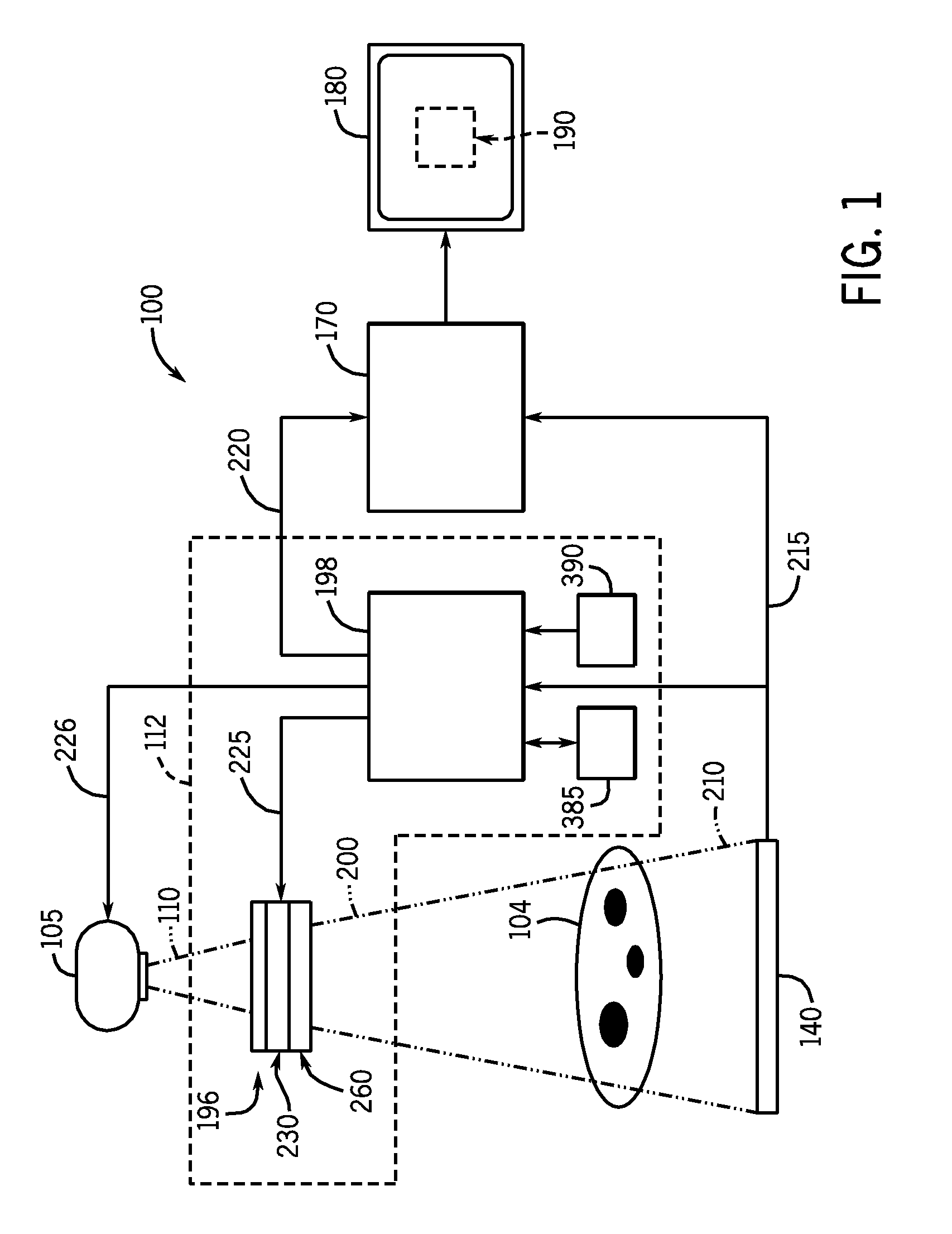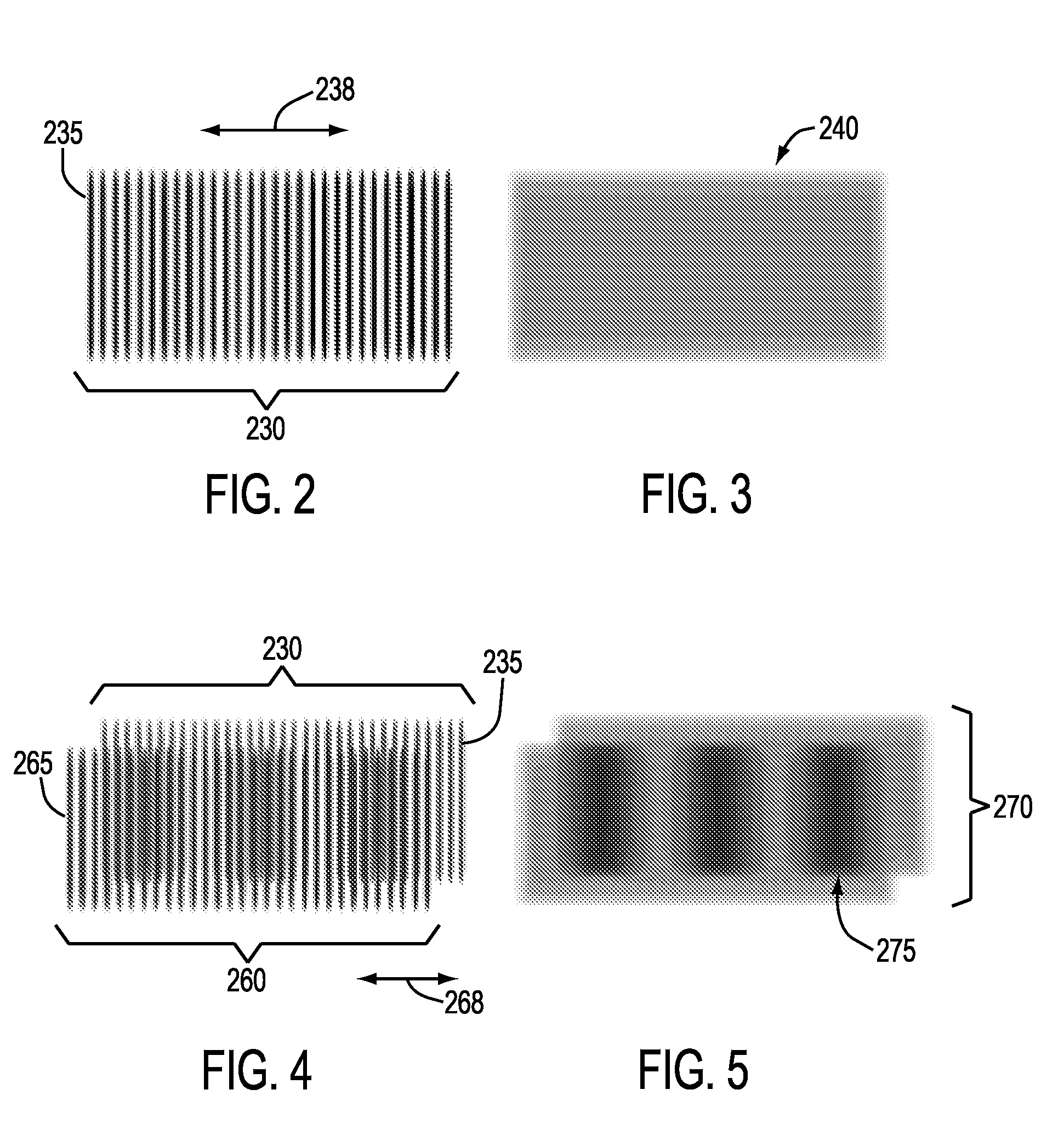Method and system for controlling radiation intensity of an imaging system
a radiation intensity control and imaging system technology, applied in the field of imaging systems, can solve the problems of only needing to be exposed to radiation at a reduced intensity, and conventional radiographic or fluoroscopic imaging systems have drawbacks
- Summary
- Abstract
- Description
- Claims
- Application Information
AI Technical Summary
Benefits of technology
Problems solved by technology
Method used
Image
Examples
Embodiment Construction
[0044]In the following detailed description, reference is made to the accompanying drawings that form a part thereof, and in which is shown by way of illustration specific embodiments that may be practiced. These embodiments are described in sufficient detail to enable those skilled in the art to practice the embodiments, and it is to be understood that other embodiments may be utilized and that logical, mechanical, electrical and other changes may be made without departing from the scope of the embodiments. The following detailed description is, therefore, not to be taken as limiting the scope of the invention.
[0045]FIG. 1 illustrates a schematic diagram of an embodiment of an imaging system 100 operable to generate a radiological image of a subject 104. The illustrated imaging system 100 performs radiological imaging by passing X-rays through the subject 104. Yet, the type of imaging employed by the imaging system 100 can vary.
[0046]The imaging system 100 generally includes a radi...
PUM
 Login to View More
Login to View More Abstract
Description
Claims
Application Information
 Login to View More
Login to View More - R&D
- Intellectual Property
- Life Sciences
- Materials
- Tech Scout
- Unparalleled Data Quality
- Higher Quality Content
- 60% Fewer Hallucinations
Browse by: Latest US Patents, China's latest patents, Technical Efficacy Thesaurus, Application Domain, Technology Topic, Popular Technical Reports.
© 2025 PatSnap. All rights reserved.Legal|Privacy policy|Modern Slavery Act Transparency Statement|Sitemap|About US| Contact US: help@patsnap.com



